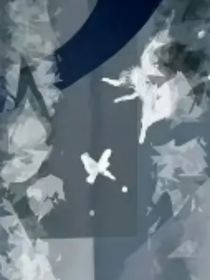直觉与潜意识(三) (5-5)
也许我们应该向最初有意识工作的阶段寻求解释,它总是先于所有卓有成效的无意识劳动。请允许我做一个粗略的比较。把我们未来的组合元素想象成伊壁鸠鲁的钩状原子。在思想完全休息的时间内,这些原子是静止的,可以说,它们是挂在墙上的……
On the other hand, during a period of apparent rest and unconscious work, certain of them are detached from the wall and put in motion. They flash in every direction through the space (I was about to say the room) where they are enclosed, as would, for example, a swarm of gnats or, if you prefer a more learned comparison, like the molecules of gas in the kinematic theory of gases. Then their mutual impacts may produce new combinations.
另一方面,在一段明显的休息和无意识的工作期间,它们中的某些原子会脱离墙壁,开始活动。它们在封闭的空间(我正想说房间)中向各个方向闪去,就像一群蚊子,或者,如果你喜欢更有学问的比较,就像气体运动学理论中的气体分子。然后,它们的相互影响可能产生新的组合。
What is the role of the preliminary conscious work? It is evidently to mobilize certain of these atoms, to unhook them from the wall and put them in swing. We think we have done no good, because we have moved these elements a thousand different ways in seeking to assemble them, and have found no satisfactory aggregate. But, after this shaking up imposed upon them by our will, these atoms do not return to their primitive rest. They freely continue their dance.
数学联邦政治世界观提示您:看后求收藏(同人小说网http://tongren.me),接着再看更方便。
相关小说
- 乱陌
- 他轻轻扼住他的下巴:“哥哥,我好难过。”
- 0.7万字1个月前
- 综:不同的人生
- 第一个世界:胡亥:观影另一个时空的成功的缔造了盛世的秦二世(胡海)[正在观影的世界的胡亥是重生了的胡海,嗯,一些设定借助了,青色兔子大大的《......
- 0.8万字1个月前
- 在神之巅里杀疯了(无限流)
- 【无限流+群像风+成长型+推理悬疑+逻辑】 神之颠,一个被誉为宇宙级别的游戏,创造者未知,相传是神所创。 人类被随机拉入游戏,有科研者、......
- 0.2万字1个月前
- 桃花公子
- 10.0万字1个月前
- 无缘千里为金
- 《悟空大人请赐教》已完结,此文是第二部,此外第一部的番外我会在这篇文里补上。“你,就是金蝉子?” 金蝉子看着眼前的女子,而后垂下眼淡淡......
- 5.2万字1个月前
- 魔法世界林意嘉
- 新书第一!我的神兽大本营上市了,绝对比这本好看!欢迎大家,谢谢支持~本书介绍:40多集的时候我写得可能有些草率——一定要坚持看下去啊!!!后......
- 10.5万字4周前





